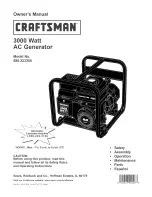
The radio receiver in the device is using the same frequency and bandwidth as the transmitter.
Cables and transducers:
Cables and transducers are not used during normal use of the device nor while programming the device.
Quality of Service for Wireless Technology
Bluetooth® Low Energy enables communication between the generator and the clinician programmer or
patient controller. The quality of the wireless communication link varies depending on the use environment
(operating room, recovery room, and home environment).
After the clinician programmer or patient controller is paired with a generator, the Bluetooth® wireless
technology symbol is visible on the clinician programmer or patient controller in the upper right-hand
corner of the screen. When Bluetooth® Low Energy is not active, the symbol appears dimmed.
The quality of service (QoS) should allow wireless data to be transferred at a net rate of 2.5 kB/sec. Each
connection interval includes a semi-duplex transmission with a required acknowledge, a transmission
latency in each direction (2x), and a receive-to-transmit mode (RX-to-TX) time. Data is resent if not
successfully received. Each key press may transmit up to 4 data packets with up to 20 bytes per packet,
depending on the number of packets that need to be transmitted (that is, if there is only one packet to
transmit, only one packet will be transmitted). If the interference is high (for example, the bit error rate
exceeds 0.1%), the user may experience what appears to be a slow connection, difficulty pairing devices,
and a need to decrease the distance between connected devices. For information on how to improve
connection issues, please refer to “Troubleshooting for Wireless and Coexistence Issues” (page 17).
Wireless Security Measures
The wireless signals are secured through device system design that includes the following:
▪
The generator encrypts its wireless communication with the programming device using a key that is
▪
unique to that link.
▪
Only one patient controller or clinician programmer may communicate with the generator at a time.
▪
▪
Standard Bluetooth® Low Energy pairing methods ensure valid and legitimate pairing among devices.
▪
▪
Proprietary authentication for the patient controller or clinician programmer applications in addition to
▪
the pairing procedure specified in Bluetooth® Low Energy, which includes an element of proximity.
▪
A proprietary algorithm that detects and prevents an unauthorized application from communicating
▪
with the generator.
▪
Whitelisting methods that prevent unauthorized devices from using Bluetooth® Low Energy scanning to
▪
interfere with communication from the generator to a legitimate patient controller or clinician
programmer.
Troubleshooting for Wireless and Coexistence Issues
If you experience issues with the wireless communication between the generator and the clinician
programmer or patient controller, try the following:
▪
Decrease the distance between the devices.
▪
▪
Move the devices so they share line of sight.
▪
▪
Move the devices away from other devices that may be causing interference.
▪
▪
Close the clinician programmer or patient controller app; then turn the clinician programmer or patient
▪
controller off and on.
▪
Wait a few minutes and try connecting again.
▪
▪
Do not operate other wireless devices, such as a laptop, tablet, mobile phone, or cordless phone at the
▪
same time.
NOTE: Wireless communication equipment, such as wireless home network devices, mobile and
cordless telephones, and tablets, can affect the device.
17
Summary of Contents for Eterna 32400
Page 1: ...Eterna Implantable Pulse Generator Model 32400 Clinician s Manual...
Page 4: ...ii...
Page 25: ...21...
Page 26: ......
Page 27: ......








































